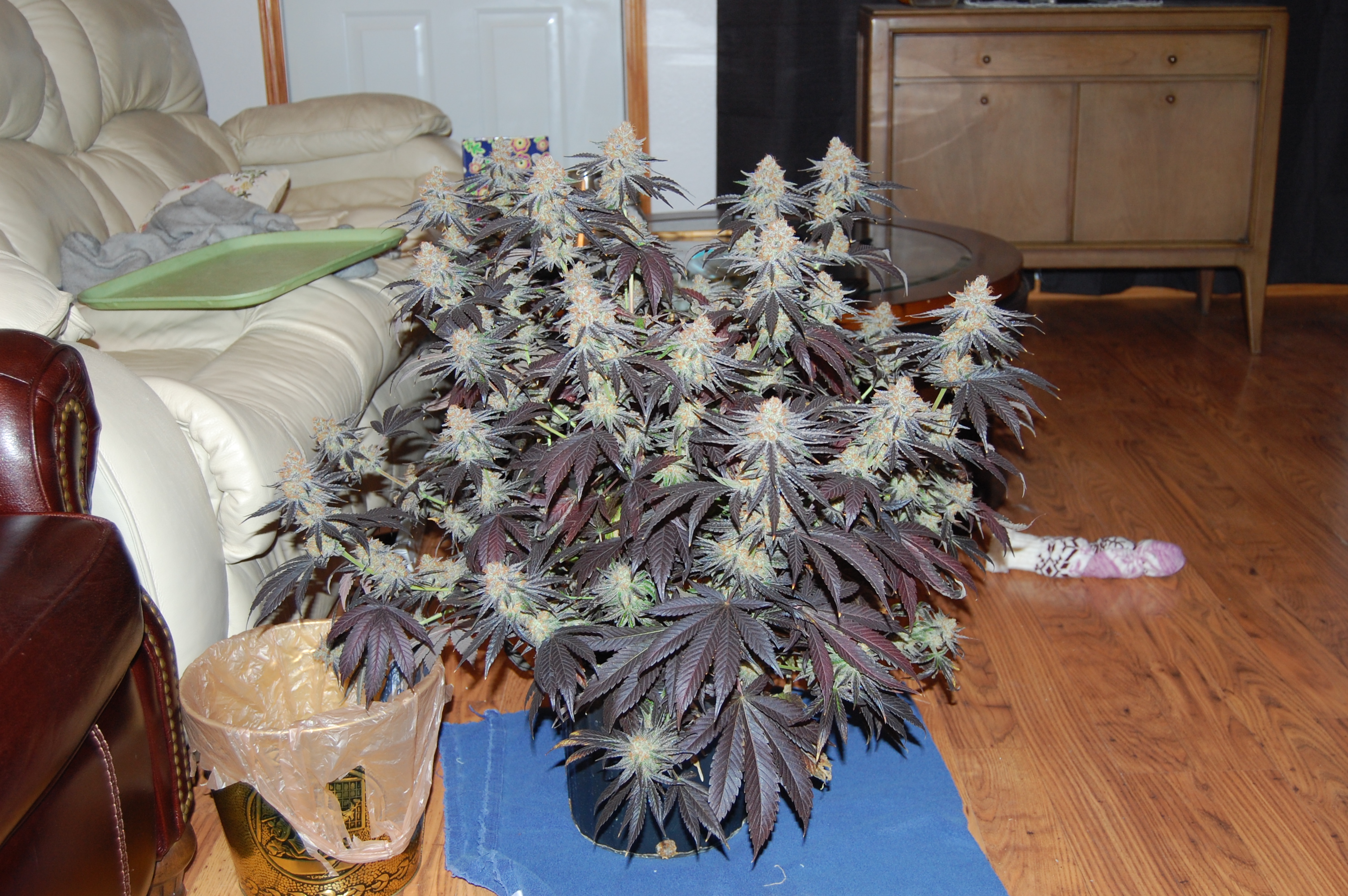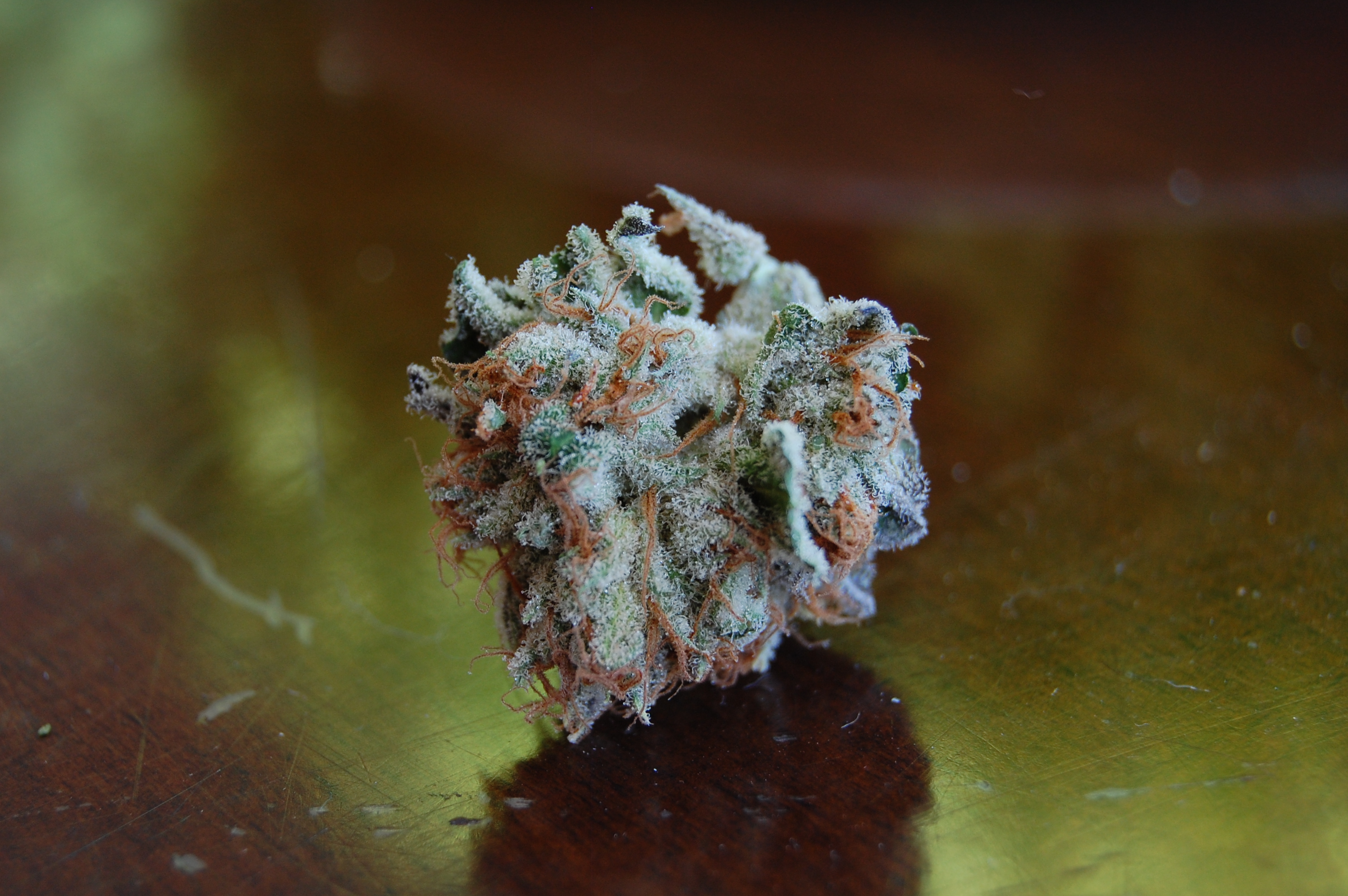You are using an out of date browser. It may not display this or other websites correctly.
You should upgrade or use an alternative browser.
You should upgrade or use an alternative browser.
THC, CBD, Terpene test results – UVA vs UVB vs none
- Thread starter Prawn Connery
- Start date
nachooo
Well-Known Member
So beautiful....

I appreciate you always being patient with my stoopid.
This plant came from back then and like us..........is still productive.
Sorry for the interruption............lolz
Rocket Soul
Well-Known Member
Knows how to grow is an understatement: 75g/square foot of prime bud (100 if count the trim jar and small buds) is the best ive seen. Especially with low plant count.He didn't publish yields for the control tent, as I think he's done s few of those before (straight QB96s, no UVB or far red supplements) so has a fair idea what that should yield on their own.
They're good figures – the guy knows how to grow (he's a proper farmer) – but you need to remember he used CO2, the plants were in DWC, and the flowering times were 12-13 weeks (sativa strain).
Rocket Soul
Well-Known Member
Beautiful frsot on those macros...

I appreciate you always being patient with my stoopid.
This plant came from back then and like us..........is still productive.
Sorry for the interruption............lolz
Prawn Connery
Well-Known Member
Haha! It's been a while. I know gad liked to think he was the centre of the universe at planetganja.com, but we started it together and I did most of the day-to-day running. He did all the coding and ran the back end, I did all the admin and ran the front end. I wonder if there are many others from PG around here?

I appreciate you always being patient with my stoopid.
This plant came from back then and like us..........is still productive.
Sorry for the interruption............lolz
Prawn Connery
Well-Known Member
Prawn Connery
Well-Known Member
Prawn Connery
Well-Known Member
Prawn Connery
Well-Known Member
Grow Lights Australia
Well-Known Member
Outstanding. We always suspected that it wasn't so much about the UV but rather the way high-energy wavelengths (shorter wavelengths such as blues and violets) stressed the plant into producing more cannabinoids to protect itself. UVB can be very damaging so can only be used in small doses or for limited amounts of time during each cycle, whereas near UV can be applied the entire 12 hour cycle. This test appears to confirm some of that. We always thought the magic number was around 400-420nm which is missing in most white phosphor LEDs.
On a related note it looks like I can post here now. Hello again
On a related note it looks like I can post here now. Hello again
Horselover fat
Well-Known Member
Outstanding. We always suspected that it wasn't so much about the UV but rather the way high-energy wavelengths (shorter wavelengths such as blues and violets) stressed the plant into producing more cannabinoids to protect itself. UVB can be very damaging so can only be used in small doses or for limited amounts of time during each cycle, whereas near UV can be applied the entire 12 hour cycle. This test appears to confirm some of that. We always thought the magic number was around 400-420nm which is missing in most white phosphor LEDs.
On a related note it looks like I can post here now. Hello again
Near UV is also much safer for the grower. This is good news.
PSUAGRO.
Well-Known Member
Interesting results, kite high never got those bumps over the years with strict control. Other stressors can influence potency, but a good initial test nonetheless.
What's the average depreciation on the uv diodes? Fluoro bulbs can be swapped easily, chips wired in series/parallel on a board ... Not so much
What's the average depreciation on the uv diodes? Fluoro bulbs can be swapped easily, chips wired in series/parallel on a board ... Not so much
Last edited:
Grow Lights Australia
Well-Known Member
Hi PSUAGRO, we don't have L70 data on the Seoul Semiconductor STW9C2PB-S Sunlike LED however the Nichia NF2W757GT-F1-E Optisolis uses a similar "purple pump" (420nm) and it has an L70 of 30,000 hours according to the data sheet. The original Sunlike LED's had a 405nm pump but this was revised to 415nm prior to first High Light production. This changed the spectrum a little (as you can see below) but it increased the efficiency of the LED by around 10% and Seoul Semi also said it increased the life of the LED (but didn't give a lifetime estimate).Interesting results, kite high never got those bumps over the years with strict control. Other stressors can influence potency, but a good initial test nonetheless.
What's the average depreciation on the uv diodes? Fluoro bulbs can be swapped easily, chips wired in series/parallel on a board ... Not so much
I have also asked Seoul Semi if they can provide the figure for you. L70 testing is done on 1.6mm FR4 with 0.07mm copper trace (2oz copper) and we use 2mm aluminium PCBs with 2oz copper, so the better thermal conductivity will help with LED life.
OK edit. Seoul Semi have just replied to me and stated
SunLike also LED, so we expect same lift time with normal LED’s. It is 50Khours +-, as you know LED’s base on the driver life time as well.
Here you can see subtle differences between the Test Board (405nm Sunlike) and the Production Board (415nm Sunlike) spectra.
Test Board

Production Board

Last edited:
Rocket Soul
Well-Known Member
Its a 4x4, with 2x4' flourescents for uv.Or_Gro was one of the best posters here. Always had interesting stuff to say. Wish he could come back.
But did I read that right? 6x QB96 in a 2x4 foot tent? Jesus. I use 2 and seems good.
OG was a really good poster but nothing is holding the rest of us back. Side by sides were really common a few years ago, cri shoutouts, mammoth p etc. I hope it comes back cause its one of the best contents, its almost like crack for the ambitious grower. At least for me
Edit: great poster
OLD MOTHER SATIVA
Well-Known Member
was there a difference in wattage between the total light in the tests?
ie. the fr and uv added up to extra photons?
ie. the fr and uv added up to extra photons?
Prawn Connery
Well-Known Member
The High Lights and QB96s were similar and the Q288s were about 60W more. It's all in post #11 on the first page.was there a difference in wattage between the total light in the tests?
ie. the fr and uv added up to extra photons?
Abiqua
Well-Known Member
I dont want to stray too far and I love the data being put out, excellent!
I wish we could go a little further and see if certain nm's are actually triggering different duplicate synthases and part of the process of loering/increasing "potency". It would make sense that a rather broad spectrum of light could trigger such similar processes in a fairly wide gene pool. Weiblen 2015, found multiple copies of thc/cbd synthases in multiple areas of the genome, which was highly unexepcted.
Just some food for thought.
I wish we could go a little further and see if certain nm's are actually triggering different duplicate synthases and part of the process of loering/increasing "potency". It would make sense that a rather broad spectrum of light could trigger such similar processes in a fairly wide gene pool. Weiblen 2015, found multiple copies of thc/cbd synthases in multiple areas of the genome, which was highly unexepcted.
Just some food for thought.
Prawn Connery
Well-Known Member
This was posted on another site where we're having a similar discussion. The interesting areas are the Cryptochrome and Pfr absorption peaks around 405-410nm, and the Pr peak around 385nm. Pfr, PR and Phototropin absorption pick up near the UVR8 range, but it seems you don't need UVB to target phytochrome, cryptochrome or phototropin absorption. Far Red, especially, can be increased with the addition of near-UV around 405nm.
The graph below is from a paper here that interestingly cites the tests I posted on the first page of this thread showing increases in cannabinoids with the addition of near-UV light: https://www.ncbi.nlm.nih.gov/pmc/articles/PMC6455078/
In case you missed it, the original tests are here: https://www.karger.com/Article/Fulltext/489030
.

If anyone is interested in knowing what all ^ this means, there is a very good article here. Don't worry, it's not too scientific and is easy to read: https://courses.lumenlearning.com/boundless-biology/chapter/plant-sensory-systems-and-responses/
The graph below is from a paper here that interestingly cites the tests I posted on the first page of this thread showing increases in cannabinoids with the addition of near-UV light: https://www.ncbi.nlm.nih.gov/pmc/articles/PMC6455078/
In case you missed it, the original tests are here: https://www.karger.com/Article/Fulltext/489030
.

If anyone is interested in knowing what all ^ this means, there is a very good article here. Don't worry, it's not too scientific and is easy to read: https://courses.lumenlearning.com/boundless-biology/chapter/plant-sensory-systems-and-responses/
Frank Cannon
Well-Known Member
Prawn whats your expected lifespan on the UV chips? Random reckoned my 6%T5s are good for 4 bloom cycles max
Similar threads
- Replies
- 190
- Views
- 28K
- Replies
- 328
- Views
- 43K








